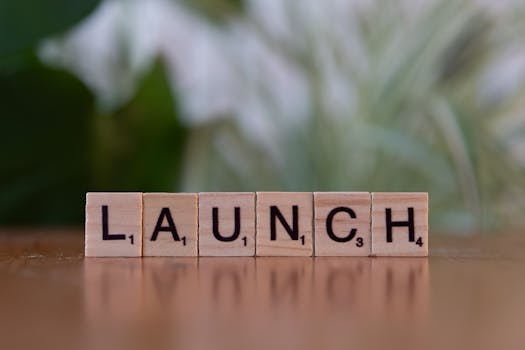A well-planned product launch gives your startup momentum, early users, feedback, and social proof. Most founders wait too long or try to launch everything at once. The key is not a perfect product but a coordinated launch that grabs attention from the right audience at the right time. In this guide, we’ll walk through how to plan and execute a launch using free and proven channels: your email list, Product Hunt, and press.
Set a Clear Launch Goal
Pick one primary goal for your launch. It could be:
- Get 1,000 people to sign up
- Drive traffic to your site for feedback
- Get top 5 on Product Hunt
- Close first 10 paid users
This will determine how you prioritize channels and tactics. Do not aim for virality. Focus on traction within your target niche.
Build Your Early Email List
The most powerful asset for your launch is a warm email list of people interested in what you are building.
How to build it:
- Create a simple waitlist landing page using Carrd, Typedream, or Framer
- Add a clear one-liner, a value proposition, and an email signup form
- Offer something of value in return: early access, exclusive updates, a free tool, or discount
- Promote the landing page on:
- Twitter, LinkedIn, Reddit (niche communities)
- Your email signature and personal site
- Relevant Slack or Discord groups
Tools:
- Use ConvertKit or Beehiiv to manage subscribers and send emails
- Use LemonSqueezy or Outseta if you plan to charge early users
Start emailing the list weekly, 3–4 weeks before launch. Share behind-the-scenes updates, mockups, beta invites, and value-driven content.
Prepare Your Product Hunt Launch
Product Hunt is a great place to launch if your product is relevant to builders, indie hackers, creators, or startup teams.
Checklist:
- Create a maker account and get involved in the community early
- Identify a “hunter” if possible but not required
- Write a compelling tagline, description, and first comment
- Add media (video or GIF demo, screenshots)
- Prepare 3–5 replies for expected questions (pricing, roadmap, integrations)
- Schedule your launch for 12:01am Pacific Time on your chosen day (Tuesdays and Wednesdays are best)
Tips:
- Use Ship to build a pre-launch following
- Ask friends and users to support your launch with upvotes and comments (don’t game it, focus on engagement)
- Be active in comments all day and respond quickly
Example resources:
Get Featured in Newsletters and Communities
You do not need mainstream press. Focus on micro-influencers, curated newsletters, and niche Slack groups.
How to get listed:
- Search Substack, Medium, or Twitter for niche newsletters your audience reads (example: Indie Hackers, TLDR, Dense Discovery)
- Email the writer a short and personal note pitching your product as useful to their audience
- Offer free access, quote a line they wrote in a recent issue, and don’t attach a press release
- Join relevant Slack groups (like Online Geniuses, GrowthMentor) and share your launch authentically
If you’re targeting B2B or professional tools, also consider Betalist, Launching Next, and StartupBase.
Prepare All Launch Assets Ahead of Time
One week before launch, finalize the following:
- Your homepage or landing page with live signup or purchase
- A clear onboarding flow (or at least welcome email)
- Screenshots, product GIFs, or short video
- Intro email to your list with the launch date
- Prewritten tweets or posts for launch day (Twitter, LinkedIn, Reddit)
- A Notion doc with FAQs and short answers for community replies
Bonus: Create a “Behind the Launch” blog post or Medium article. Share your journey, why you built the product, and how people can support. Authenticity builds trust and connection.
Launch Day Execution Plan
Your job on launch day is to show up, engage, and make it easy for others to support you.
- Post the launch on Product Hunt at 12:01am PST
- Send launch announcement to your email list
- Share on personal and company Twitter, LinkedIn, Reddit
- DM 10–20 friends or users who said they’d support you (use Notion to track)
- Thank every commenter and reply to all questions publicly
- Pin a tweet with the launch post and ask others to retweet
After 24 hours, thank your audience and share early results: number of users, feedback highlights, etc. Do a quick post-mortem internally and with your team.
Final Checklist
- Launch goal defined (signups, users, visibility)
- Early access landing page created and shared
- Email list warmed up with weekly updates
- Product Hunt listing written and scheduled
- Launch assets ready (screenshots, copy, replies)
- Outreach done to niche newsletters and communities
- Launch day schedule created and shared with team
- Feedback gathered and learnings documented
Recommended Resources
- “Launch” by Jeff Walker – good structure for email-driven launches
- Kevon’s Public Launch Playbook – transparent founder launches
- Carrd, ConvertKit, Figma, Beehiiv
- Slack groups: Indie Hackers, Online Geniuses, GrowthMentor, WIP

